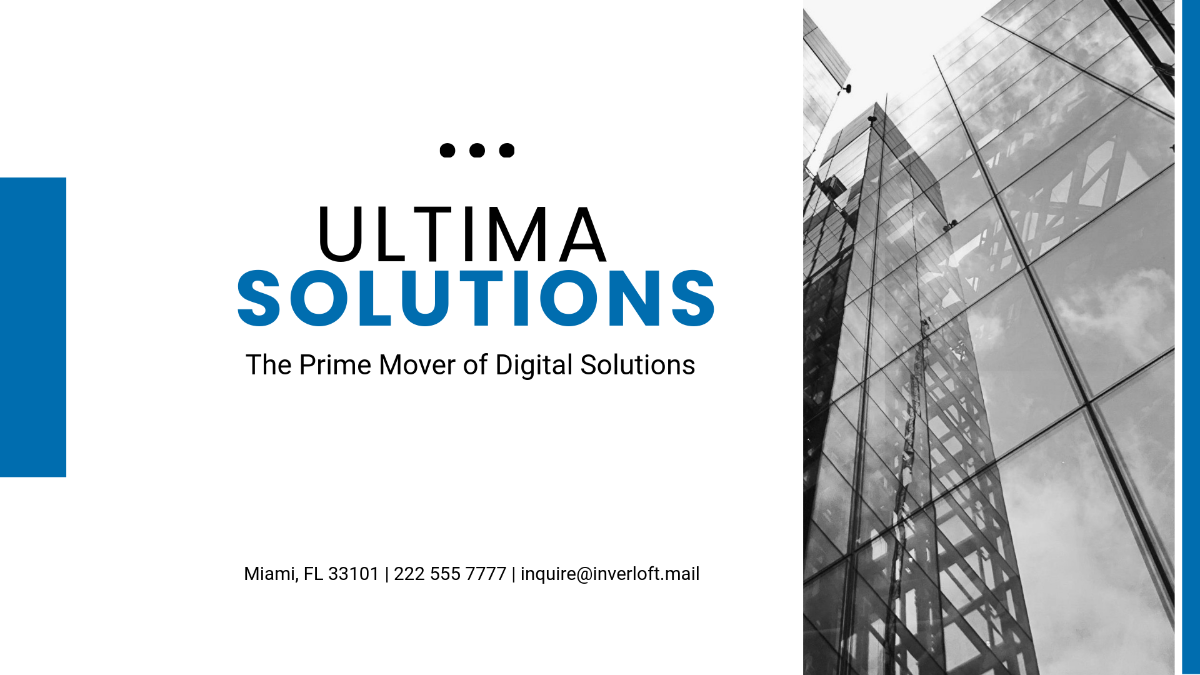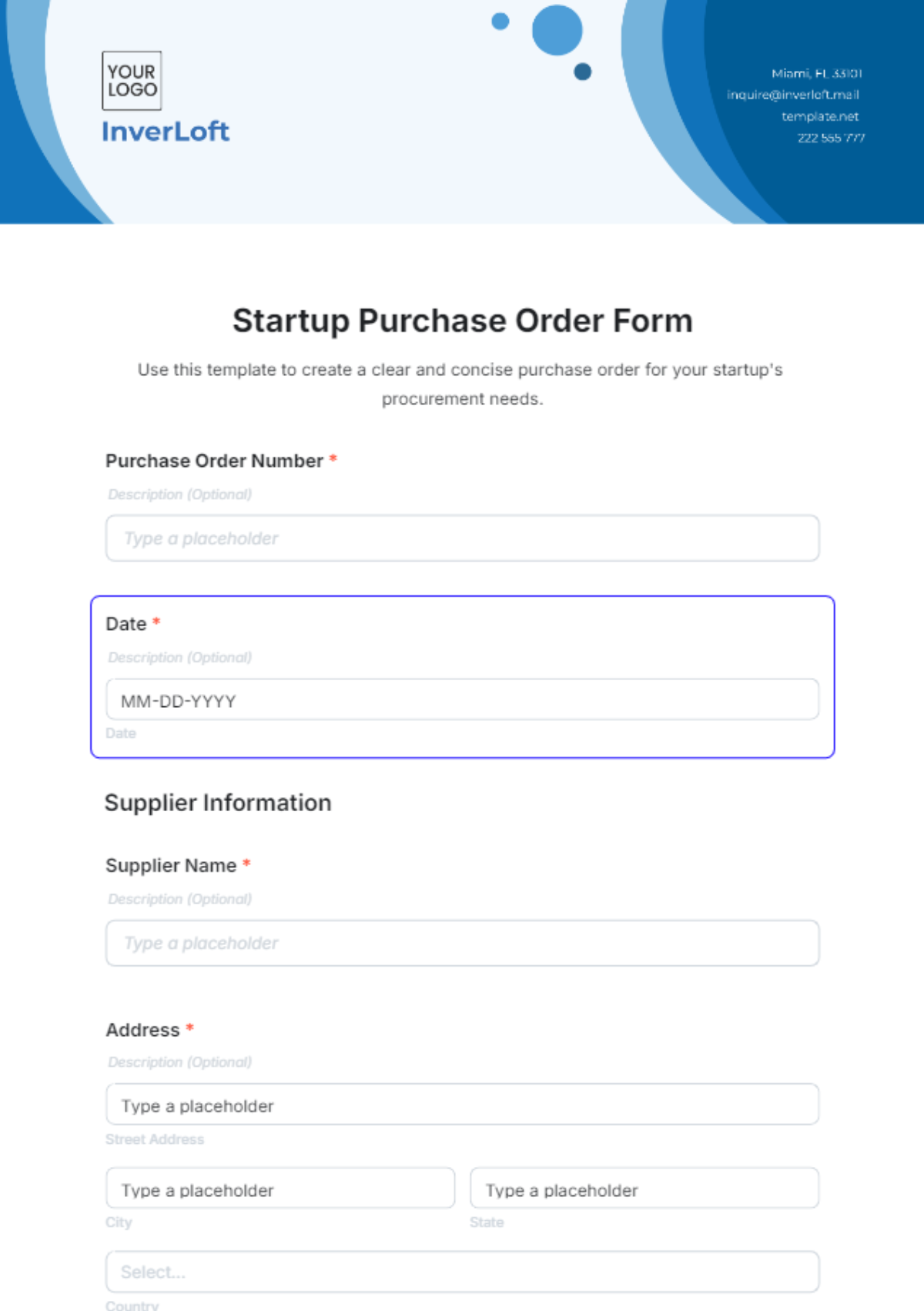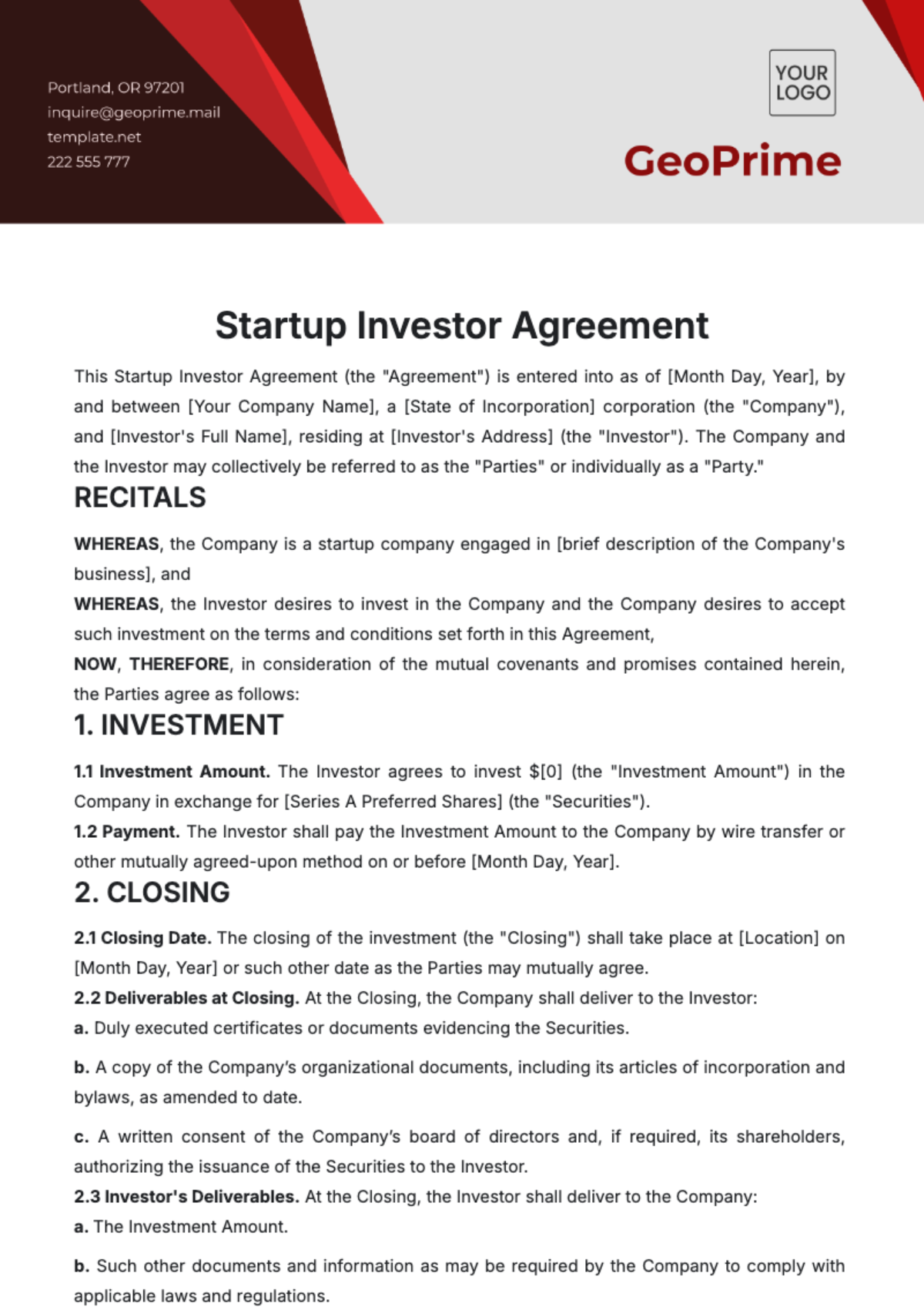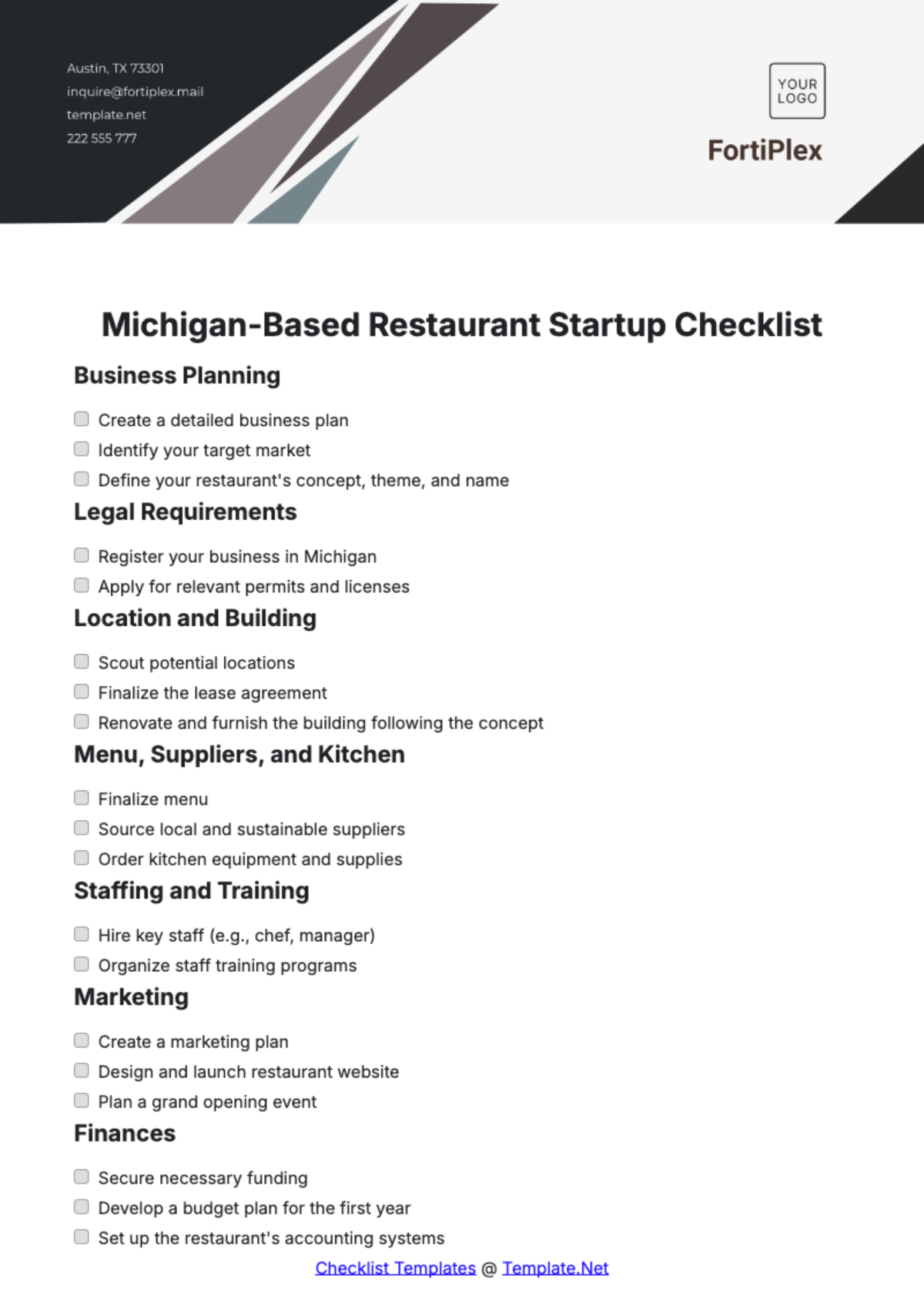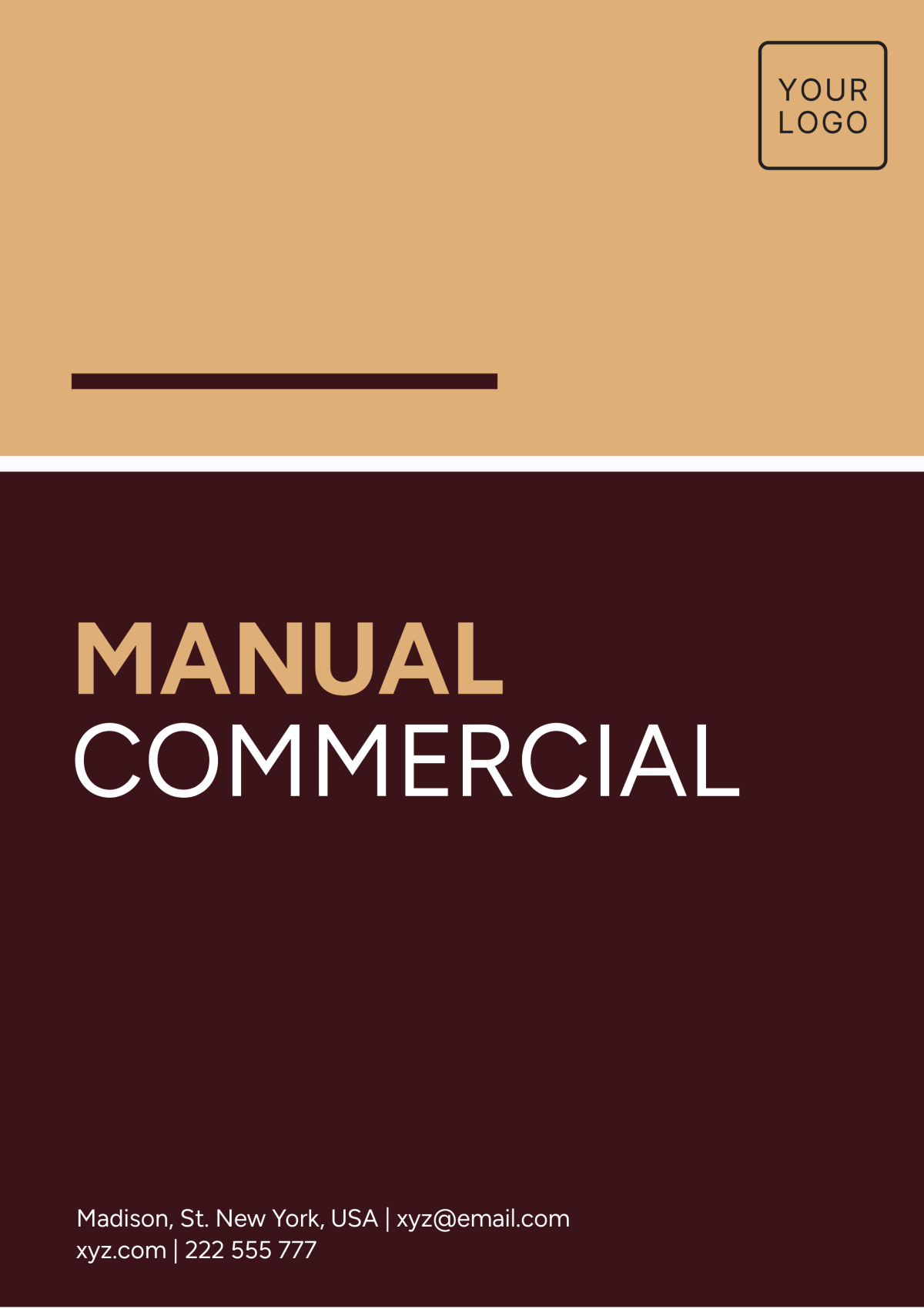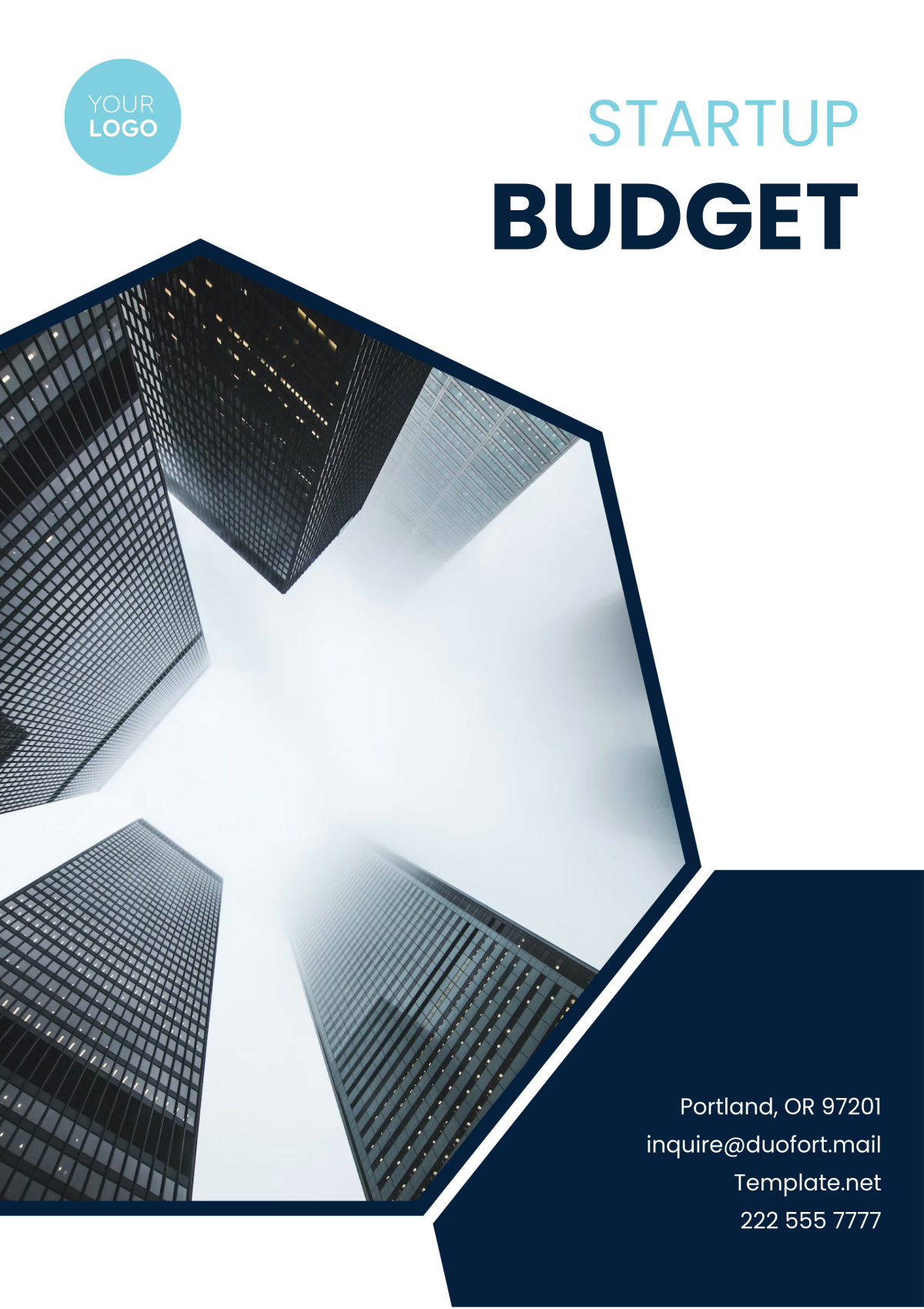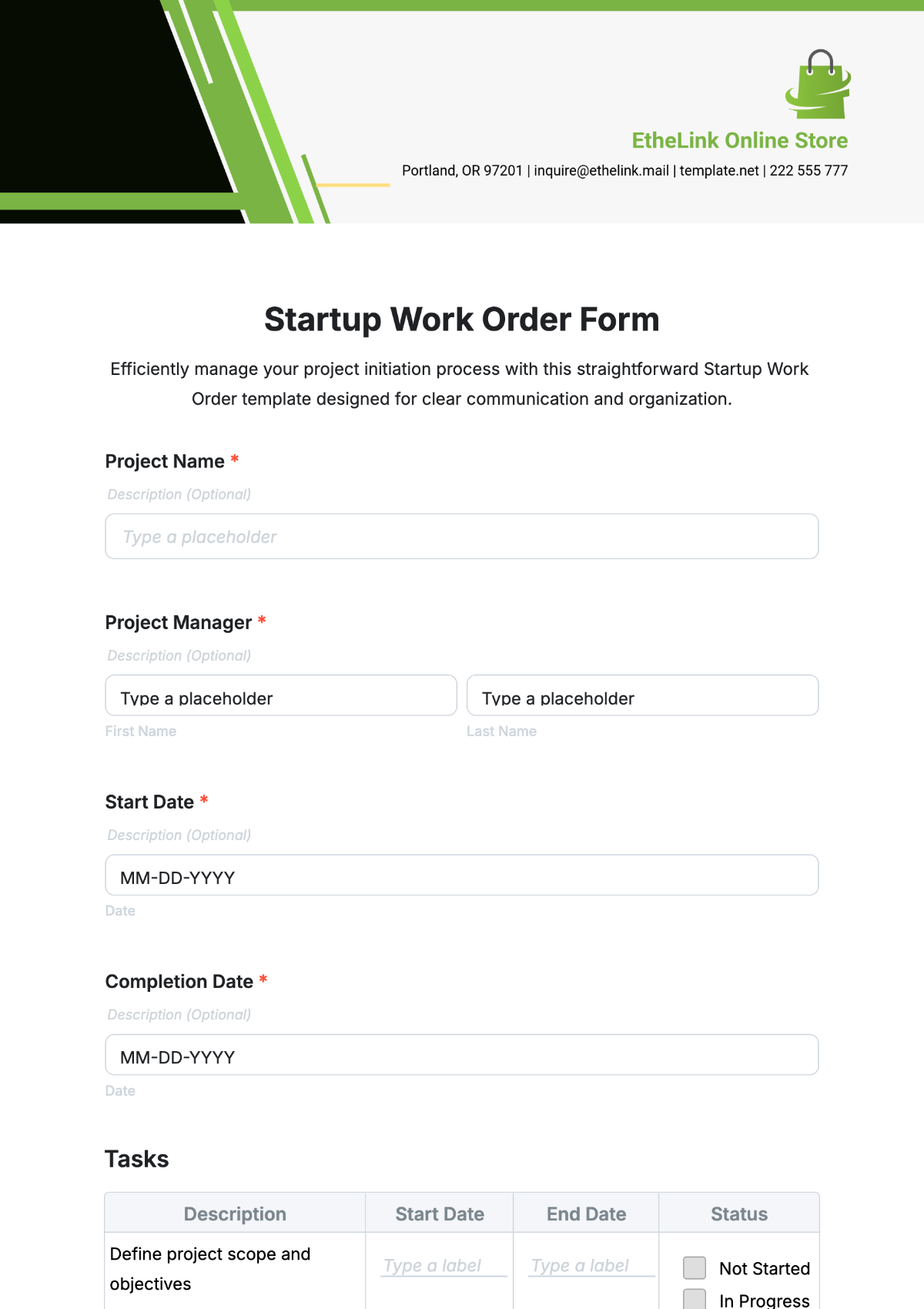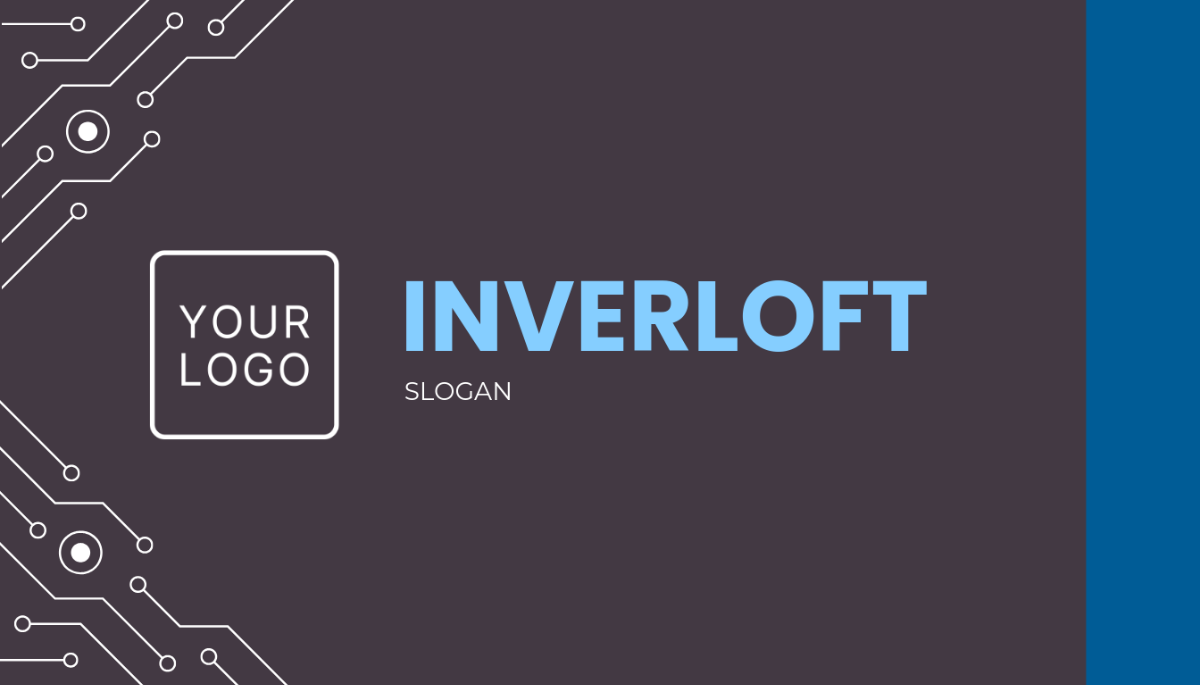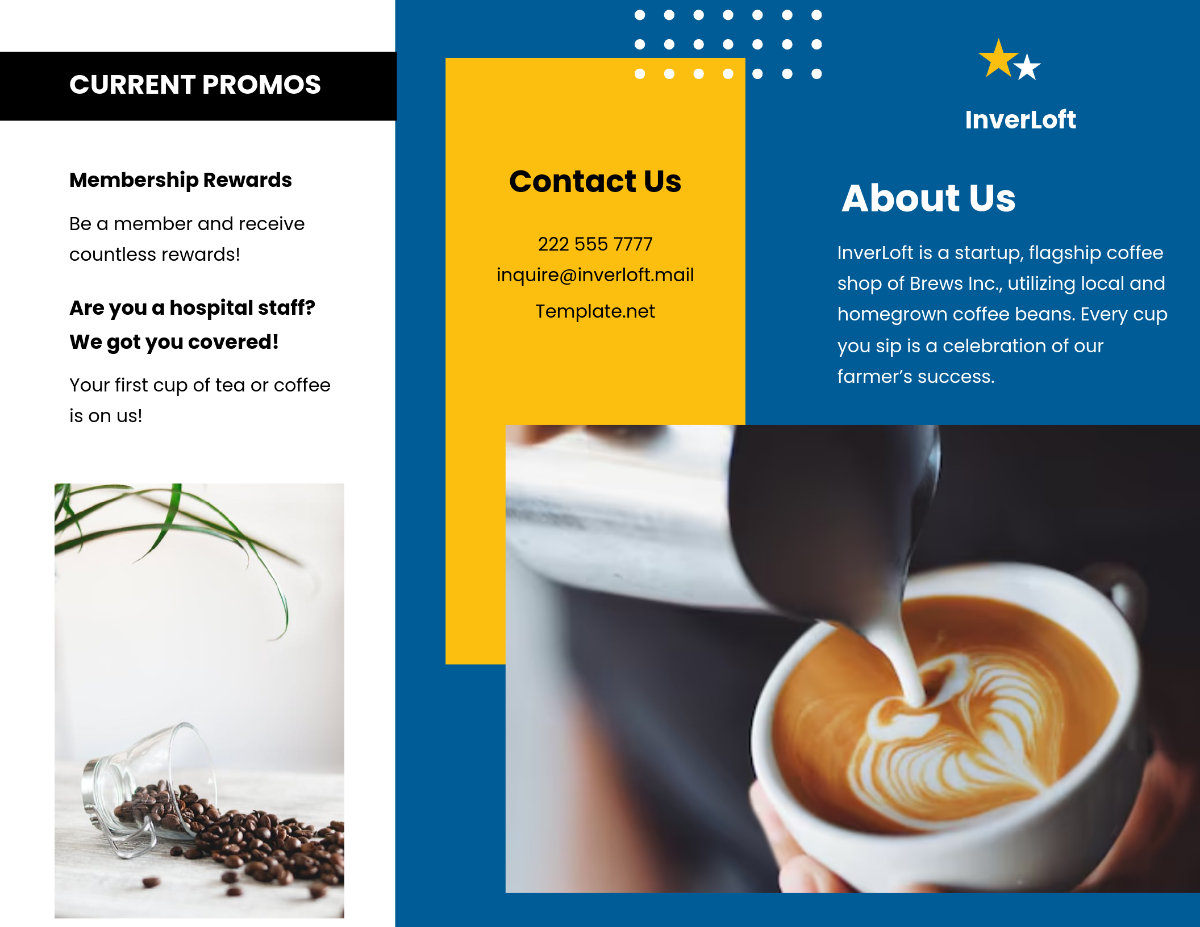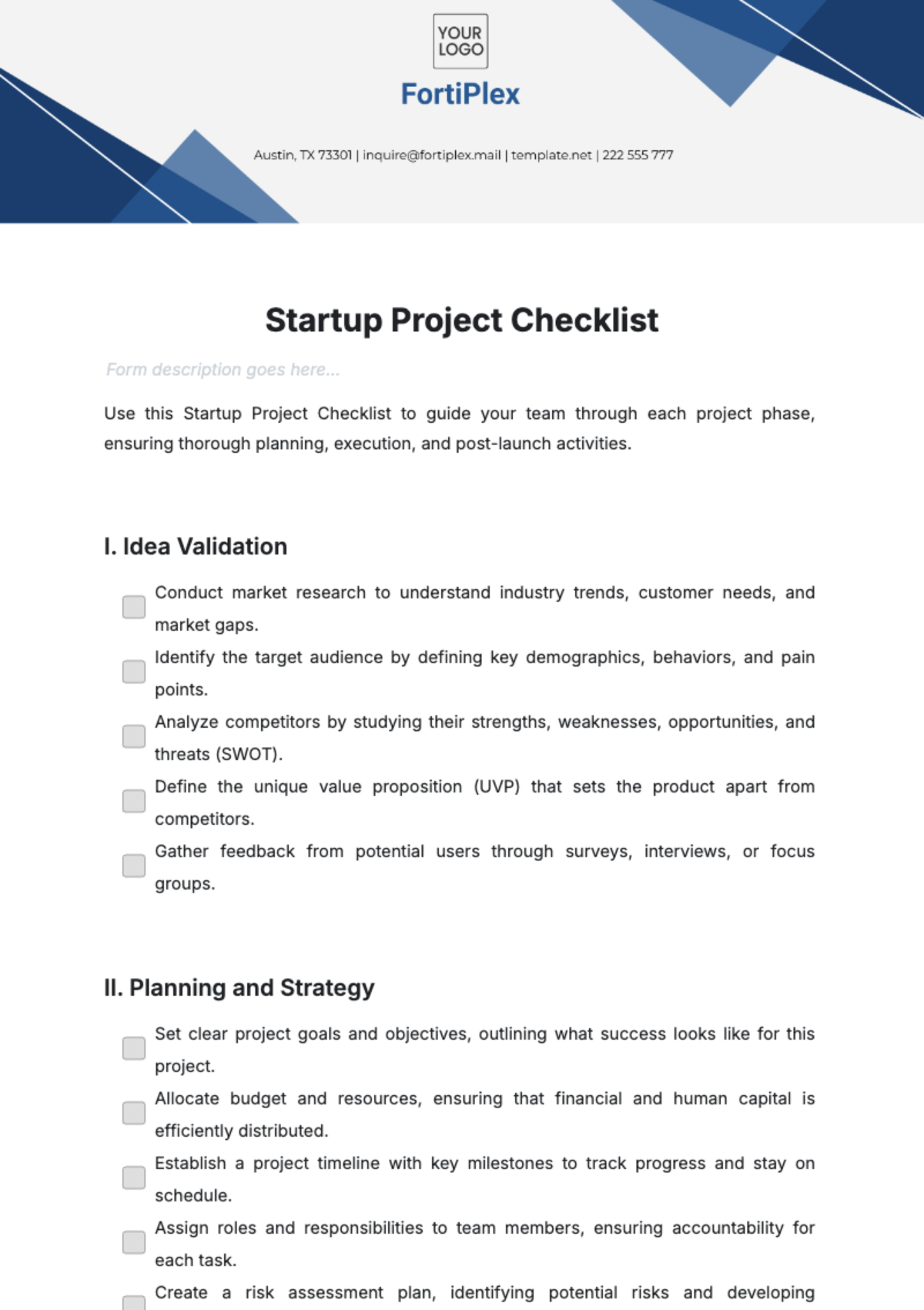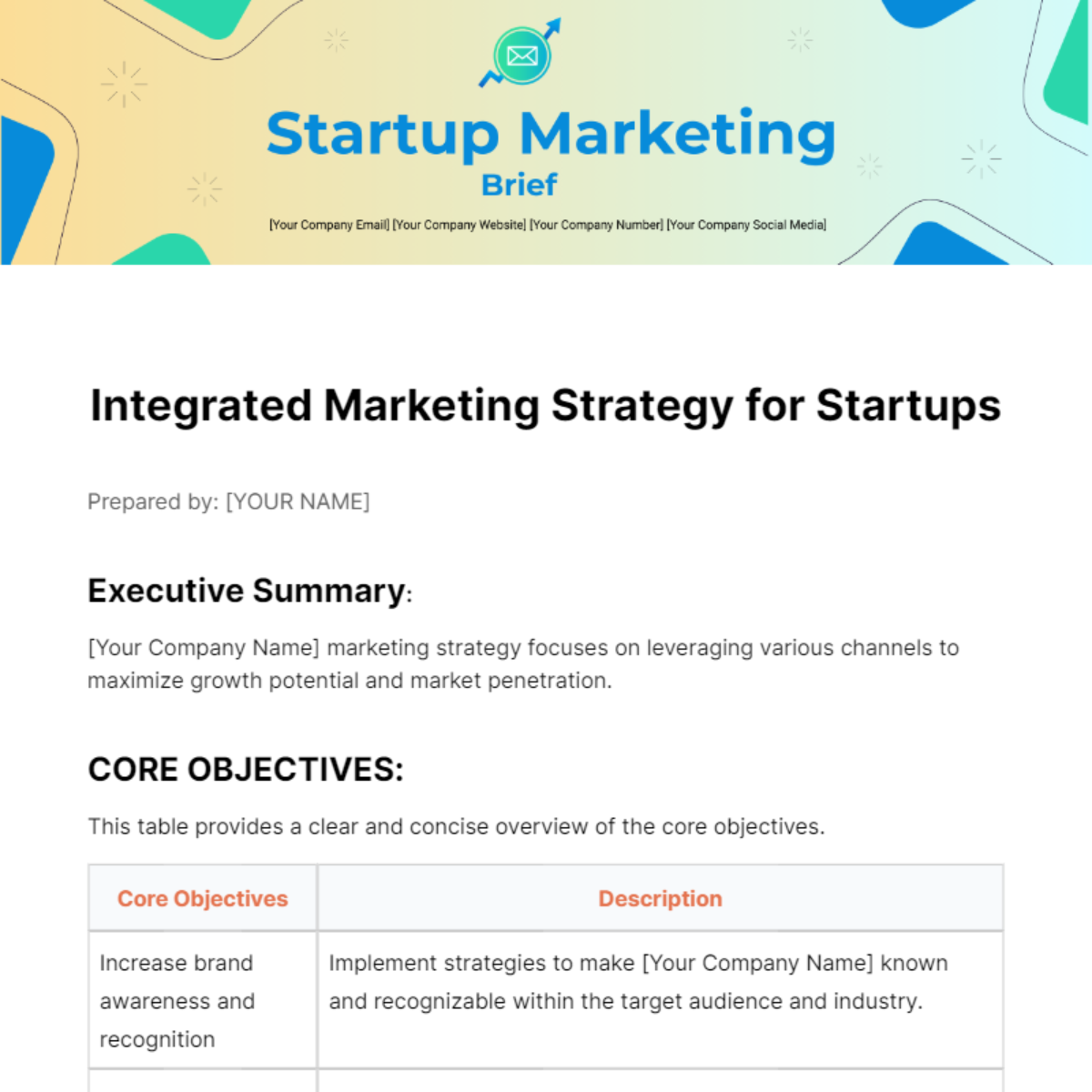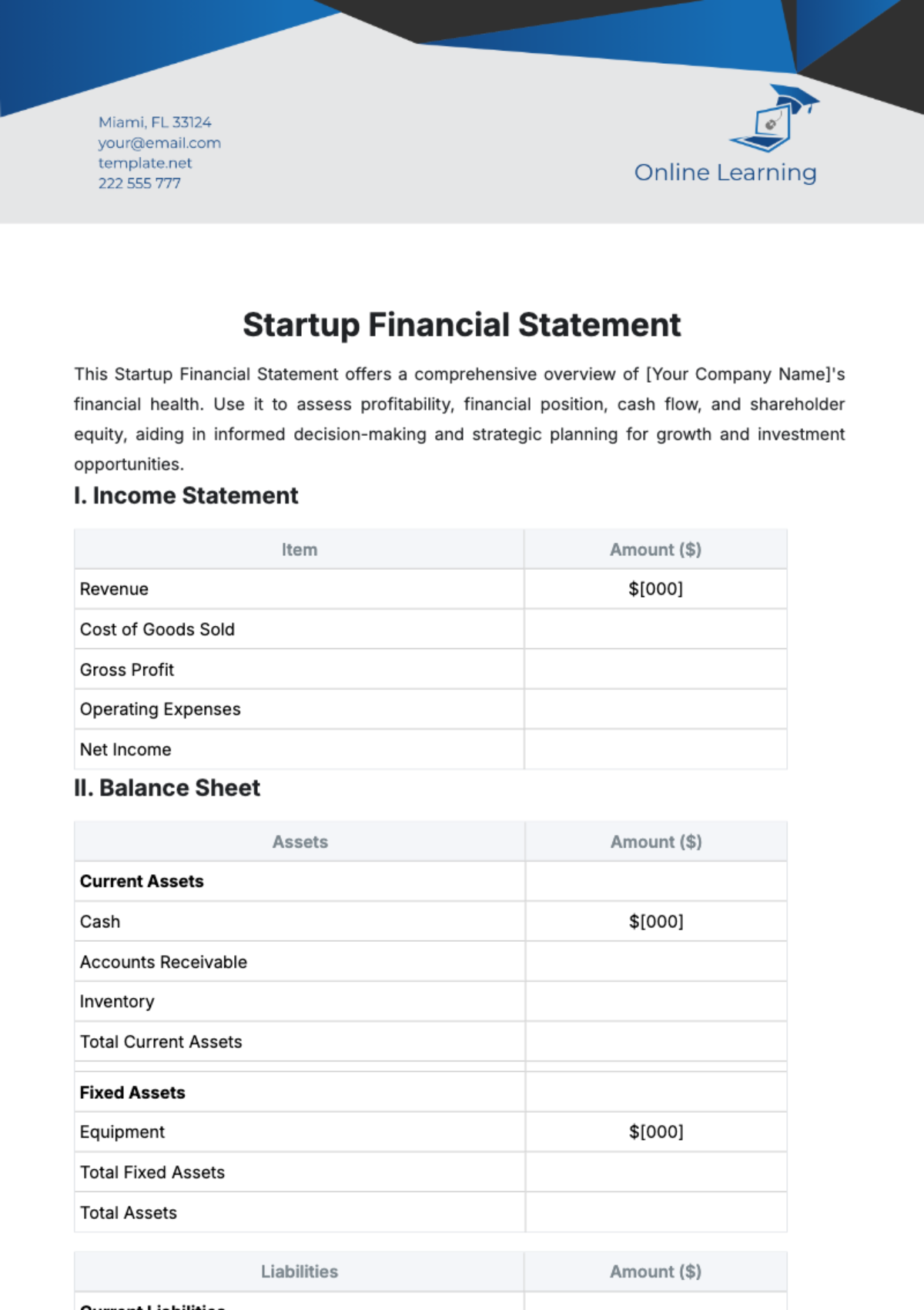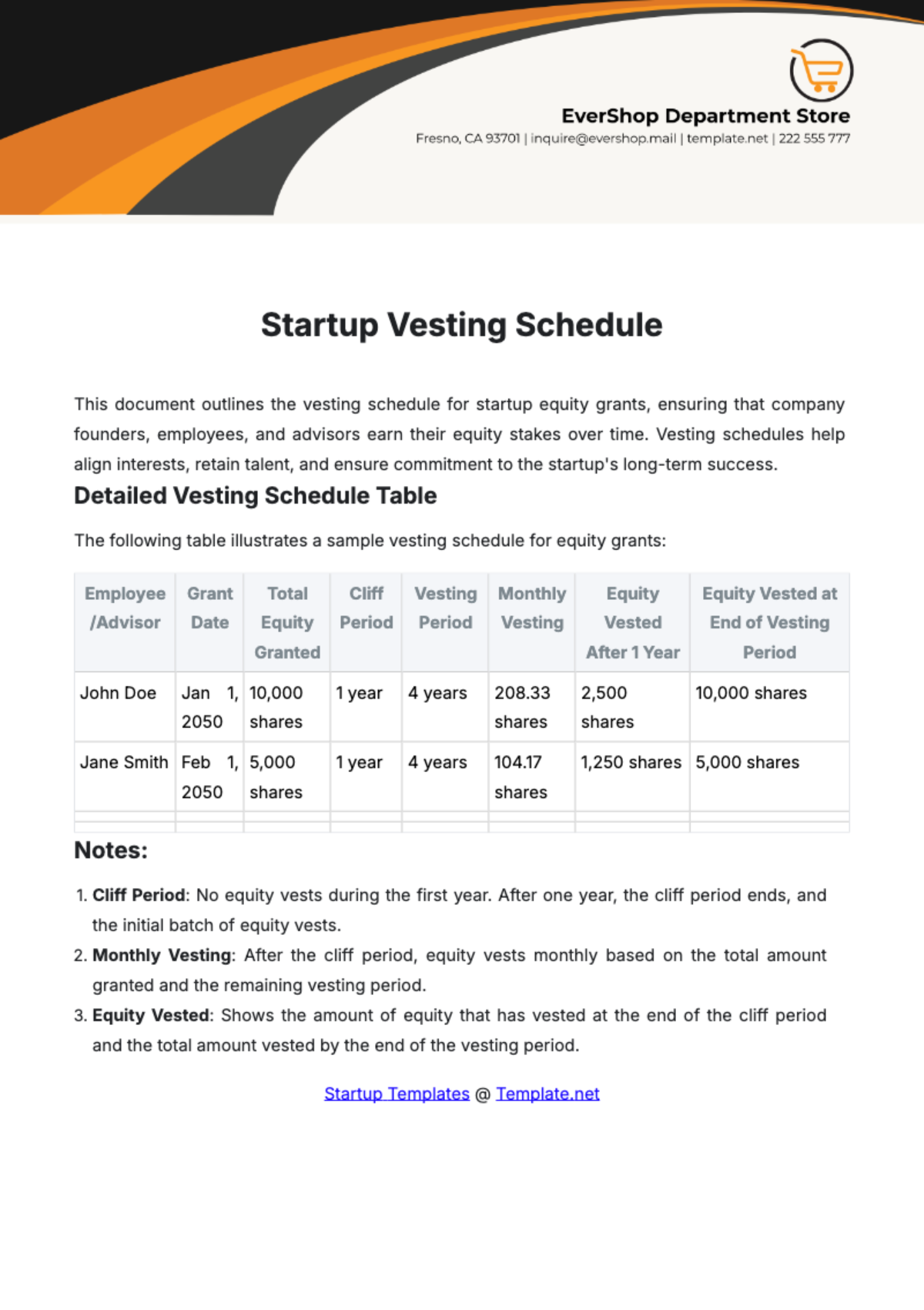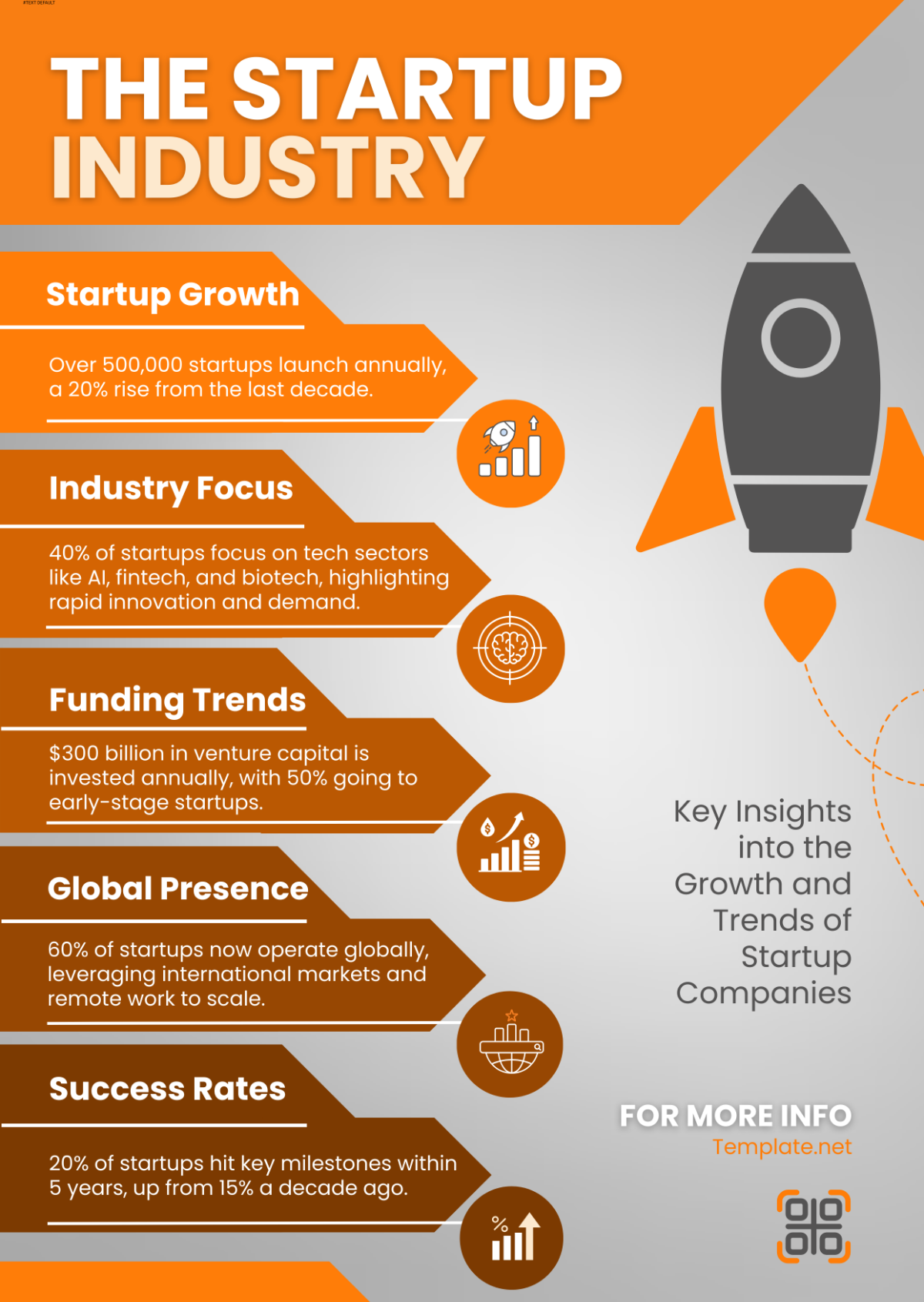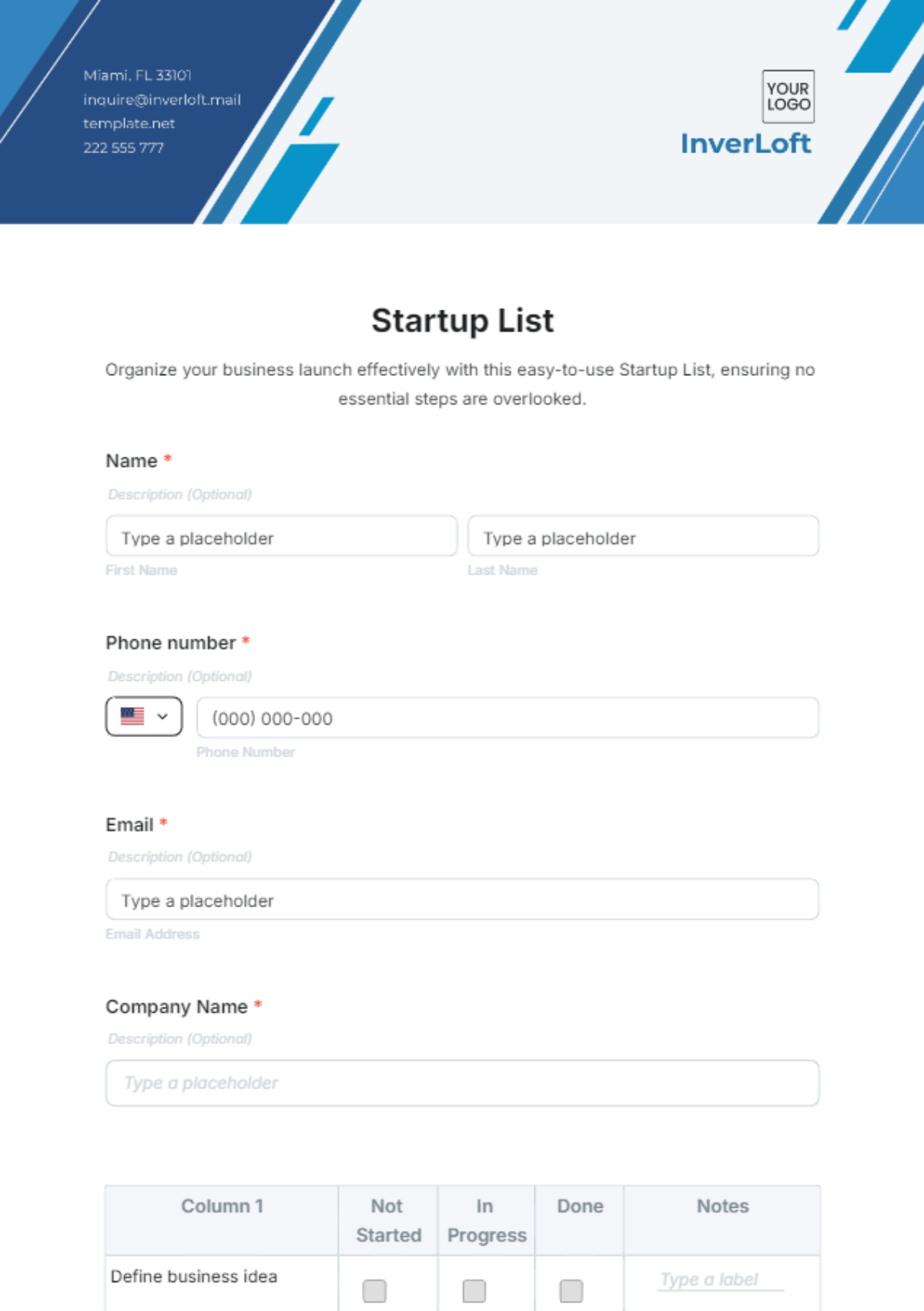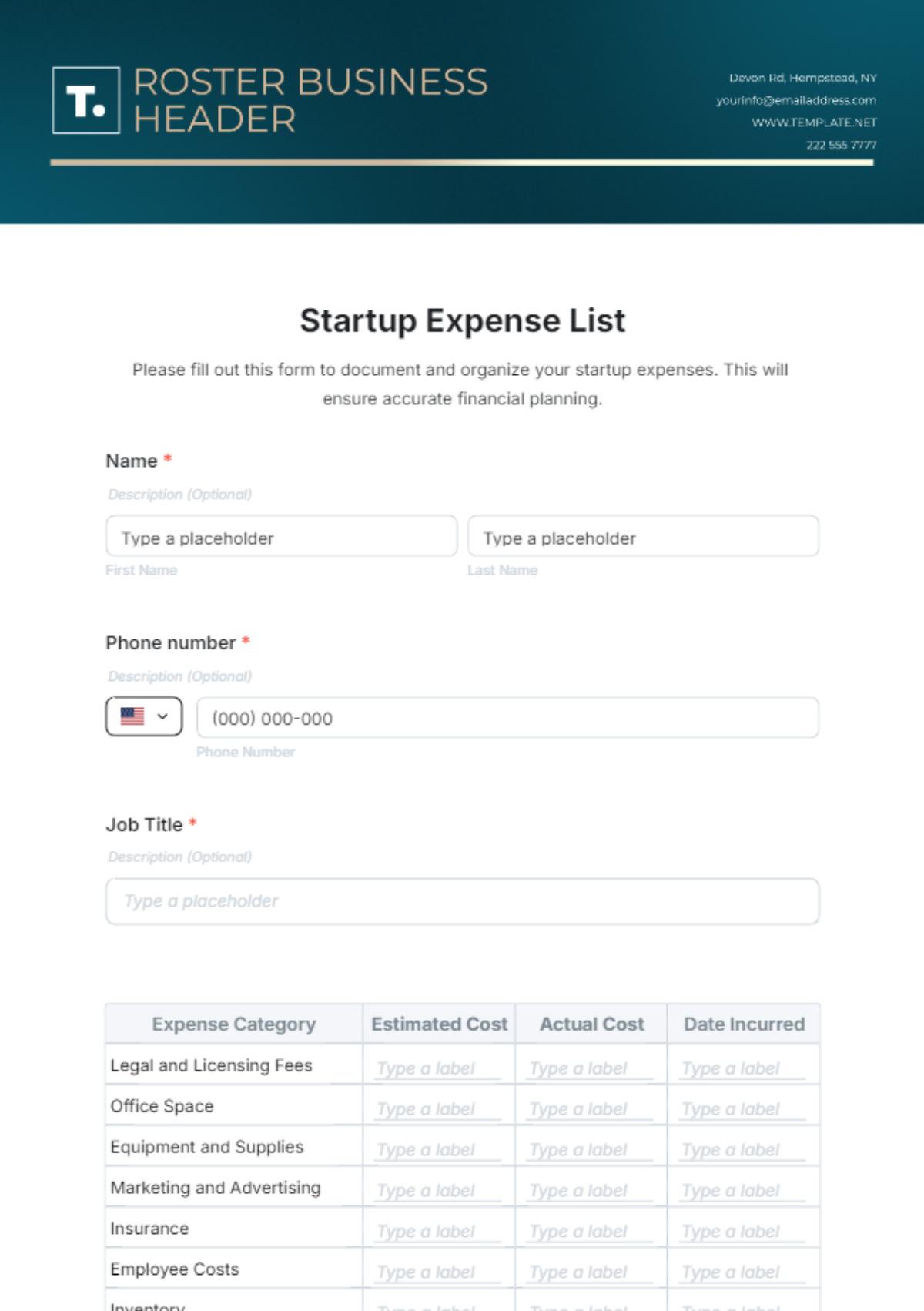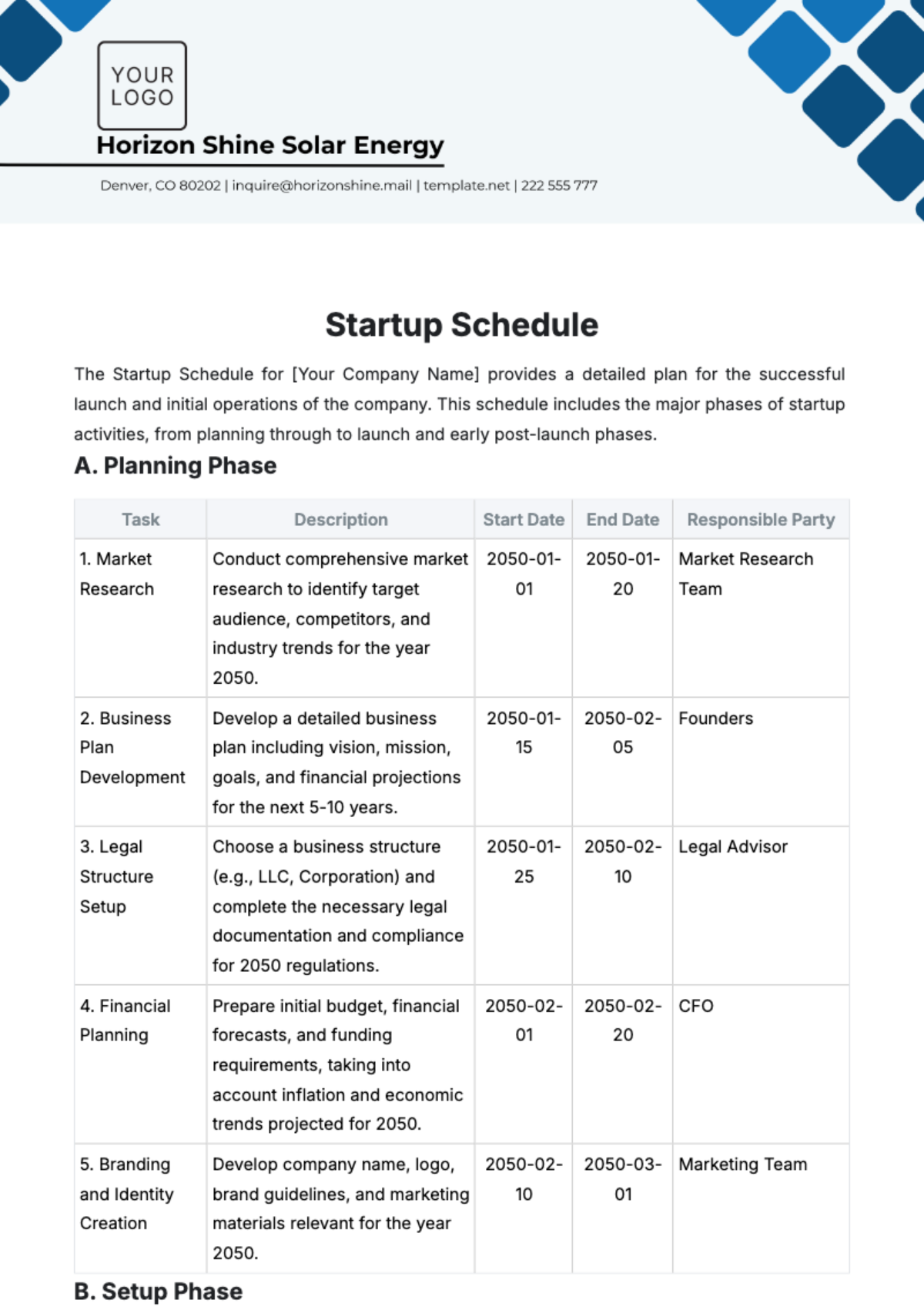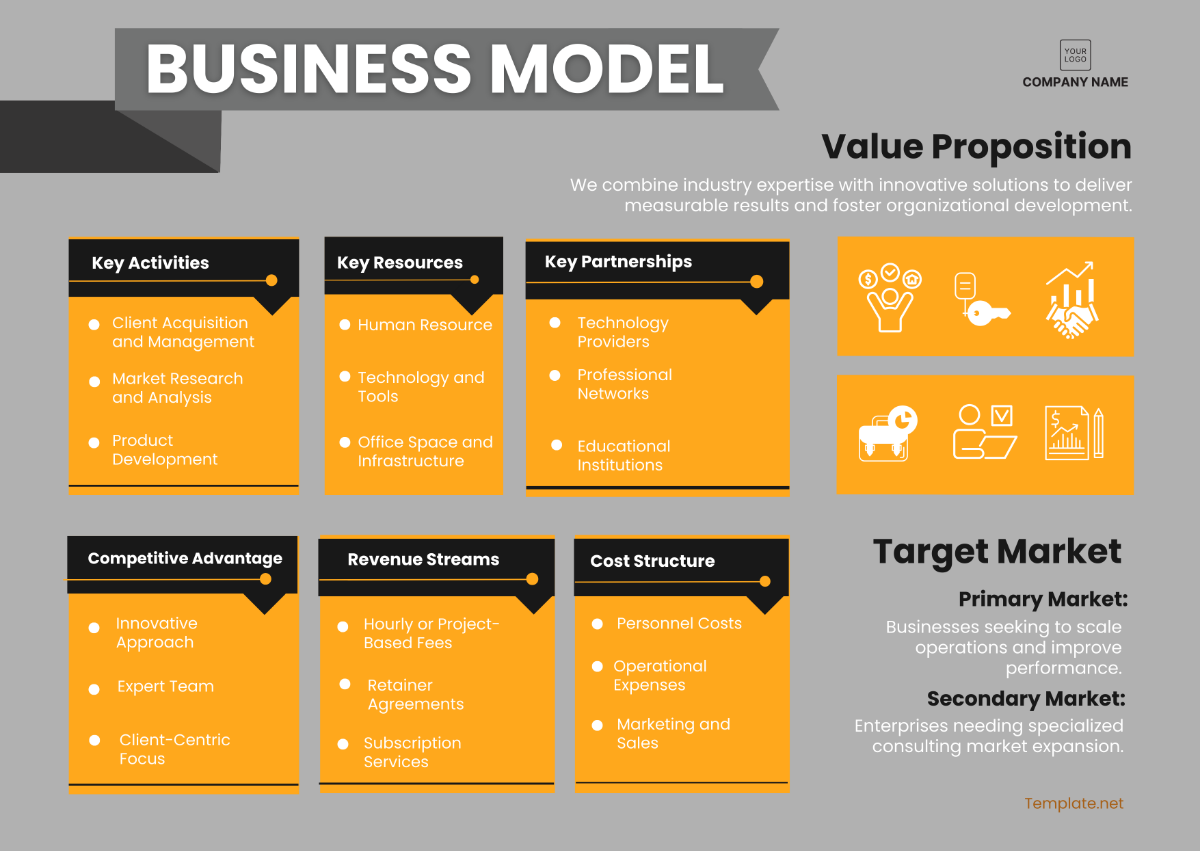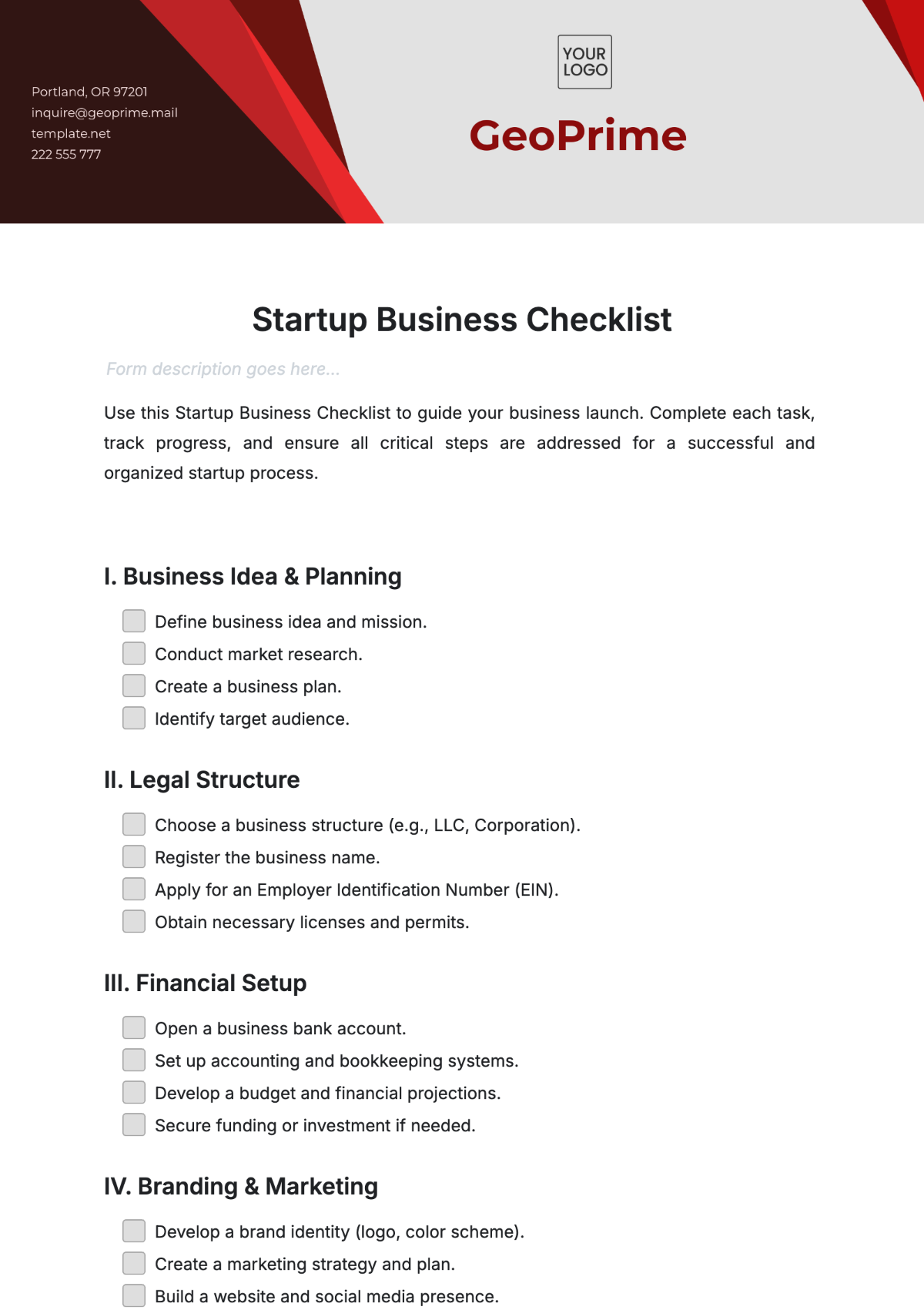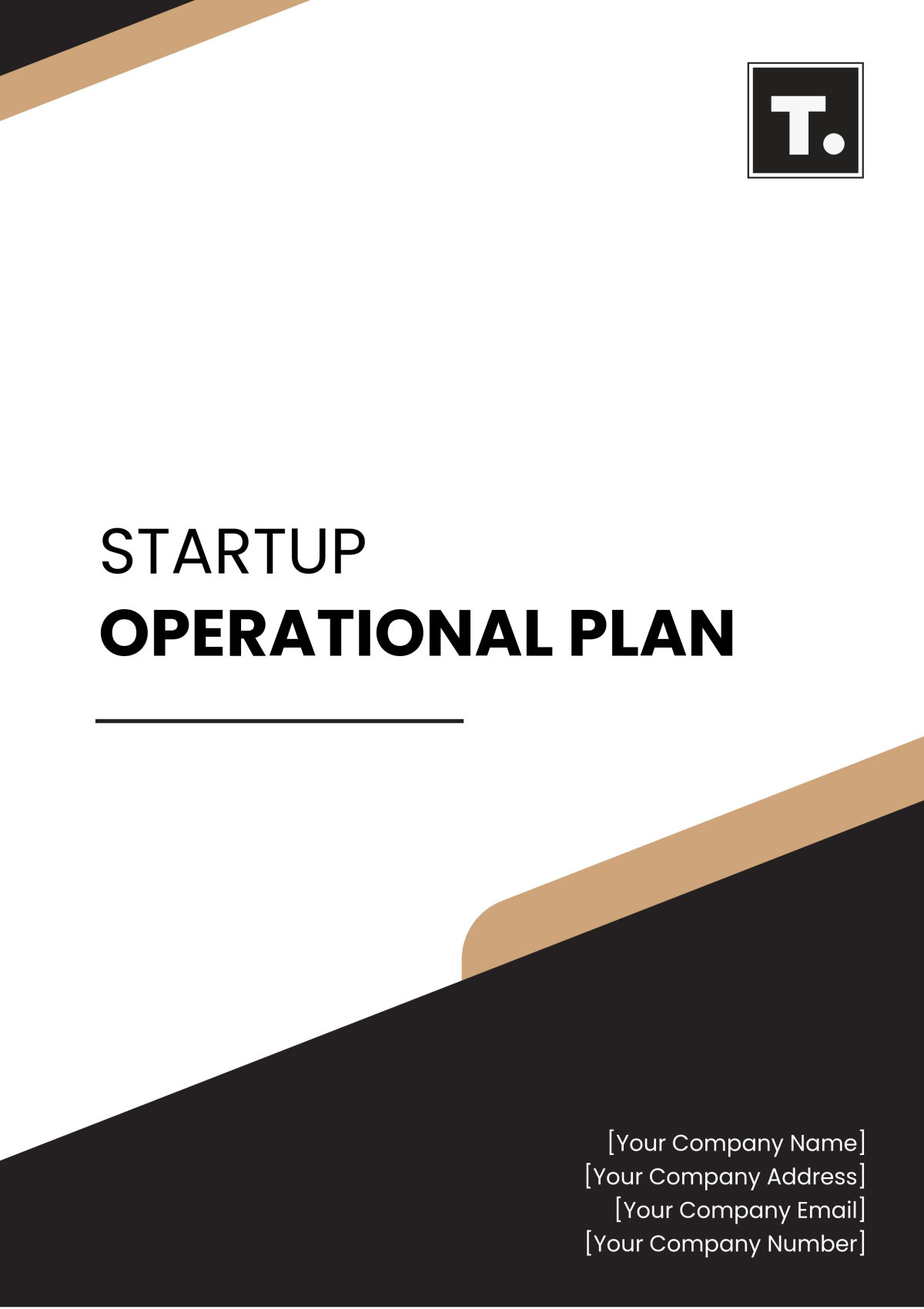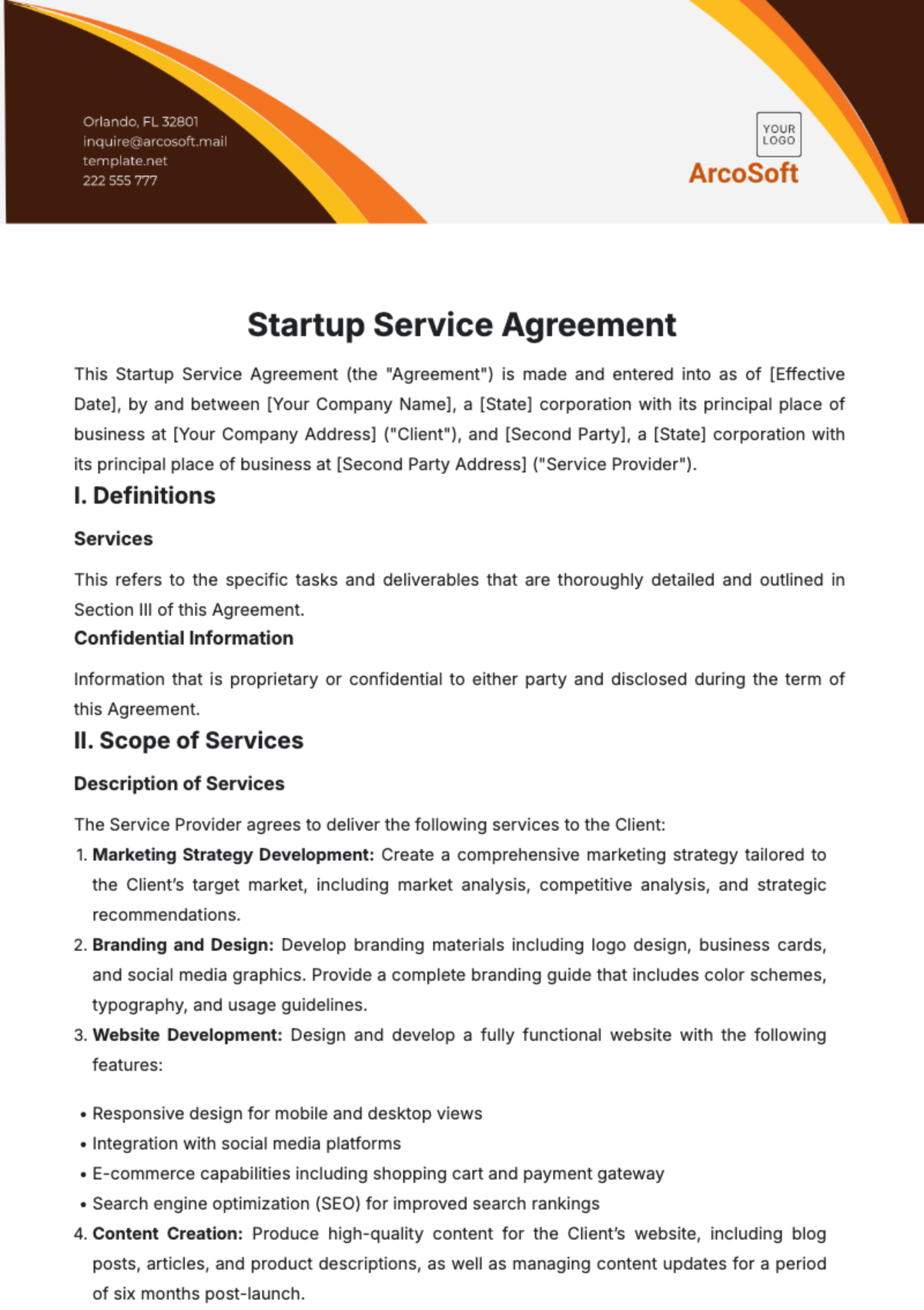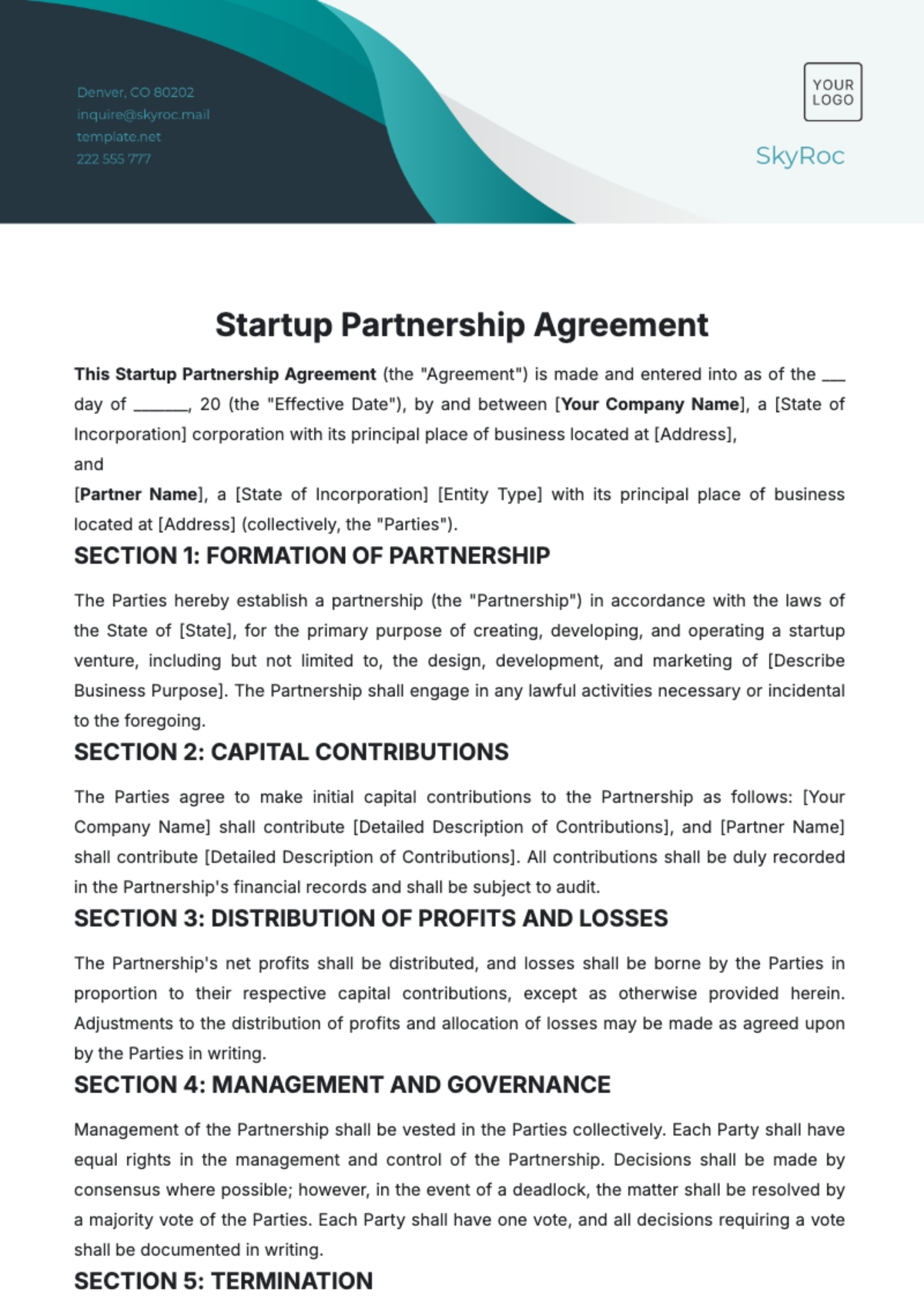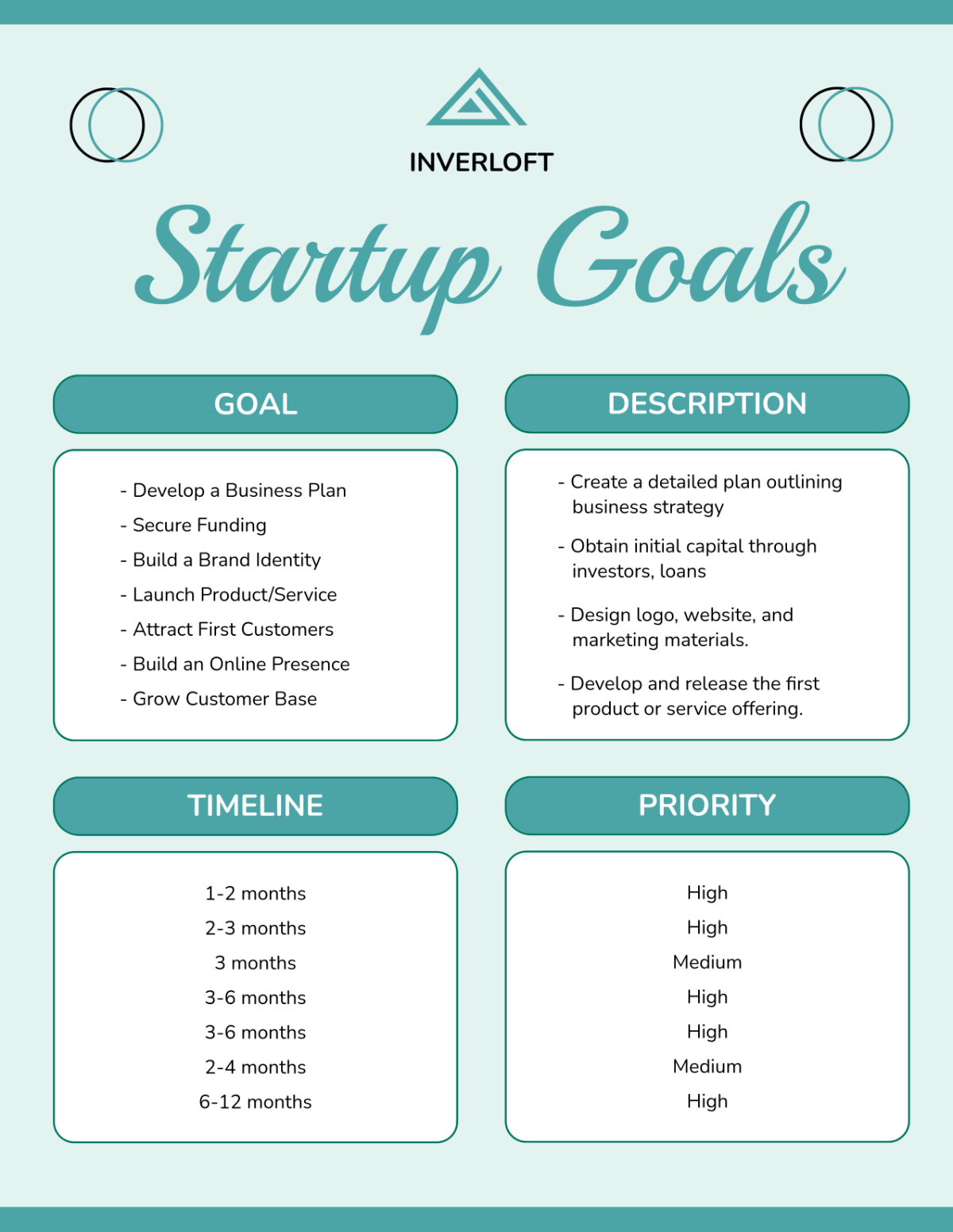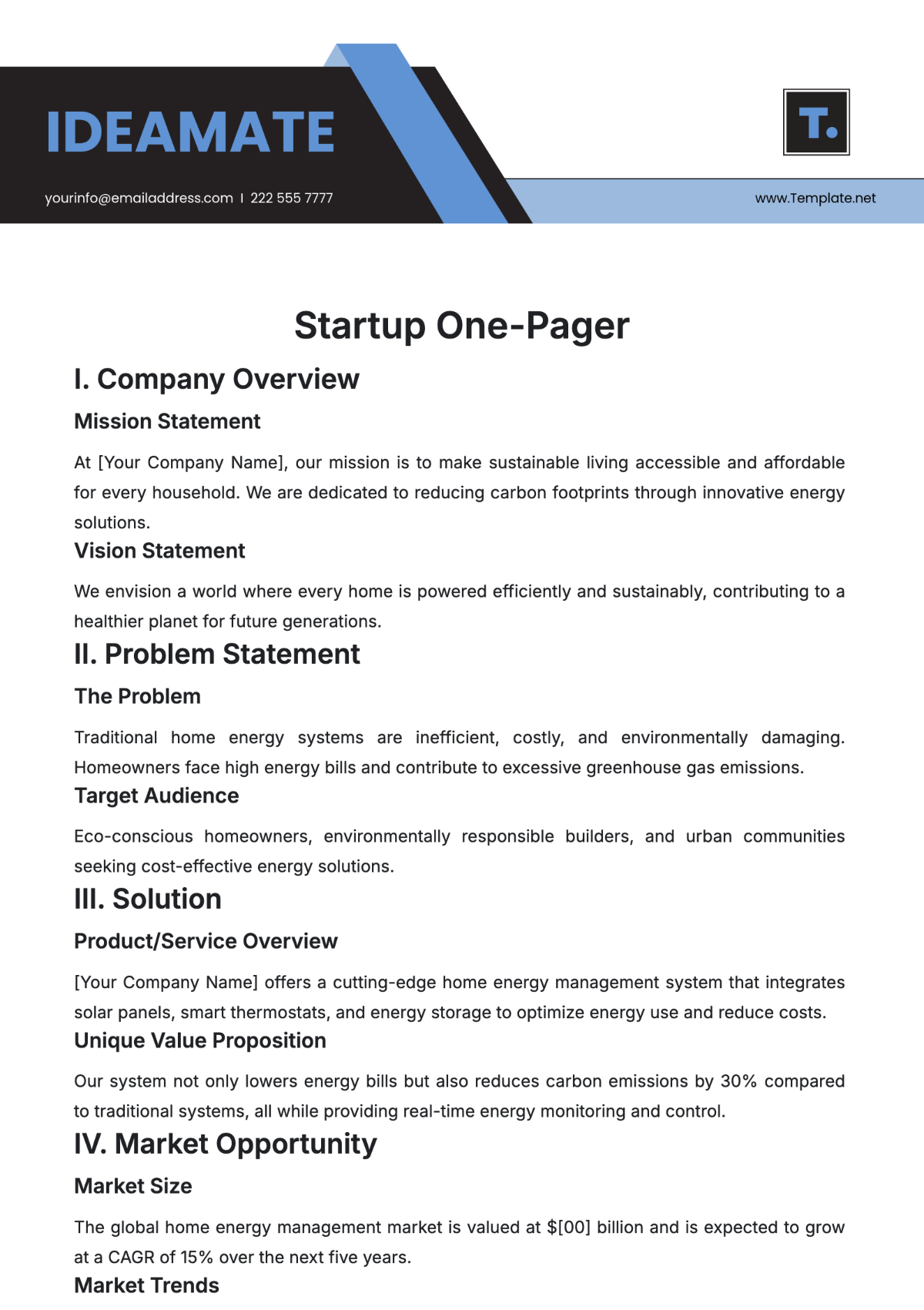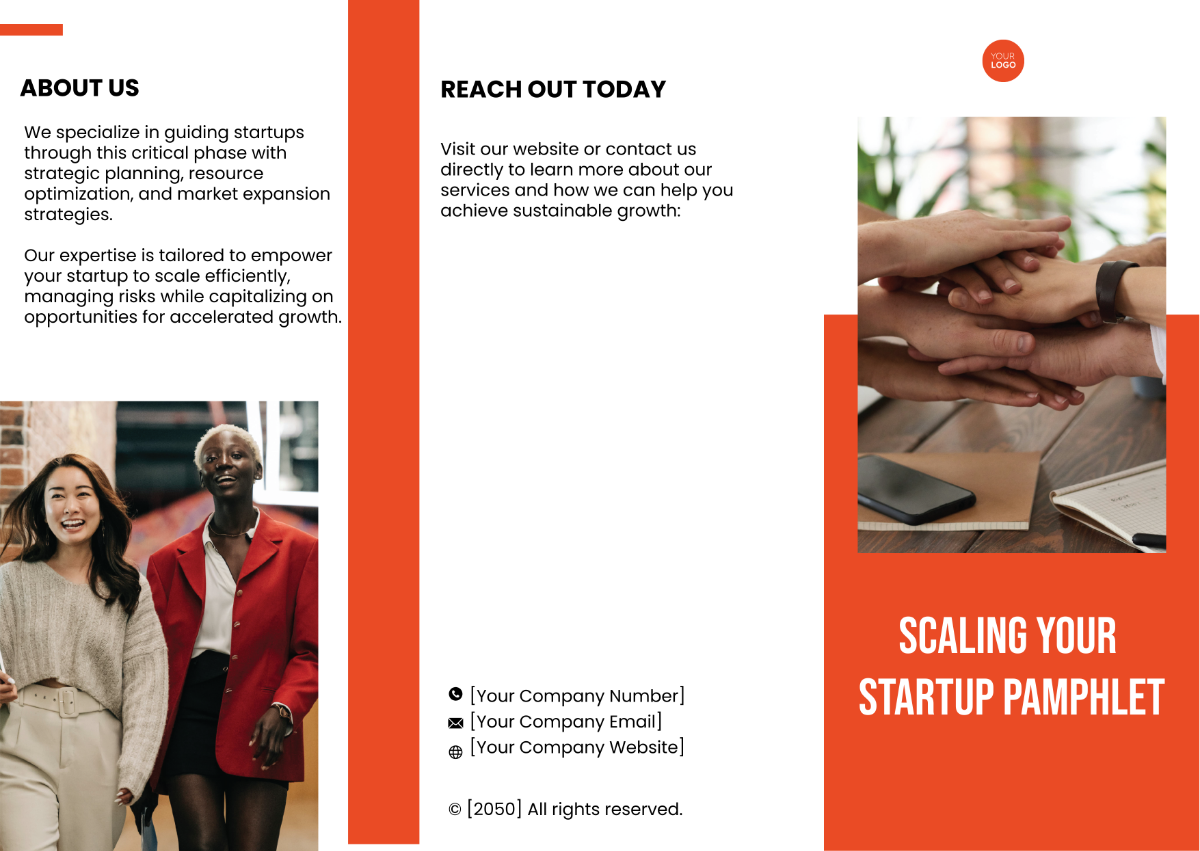Startup Facilities Management Protocol
I. Introduction
A. Purpose
This Facilities Management Protocol outlines the guidelines and procedures for the effective management and maintenance of [Your Company Name]'s facilities. It aims to ensure the safety, functionality, and efficiency of all physical assets, including buildings, equipment, and infrastructure.
B. Scope
The protocol applies to all facilities owned or leased by [Your Company Name] and encompasses all aspects of facility management, including maintenance, safety, security, and environmental sustainability
II. Roles and Responsibilities
A. Facilities Manager
Oversee the overall management of facilities and coordinate maintenance activities.
Develop and implement facility management plans, budgets, and schedules.
Ensure compliance with regulatory requirements and industry standards.
Coordinate with internal stakeholders and external service providers.
B. Maintenance Team
Conduct routine inspections and preventive maintenance tasks.
Respond promptly to maintenance requests and address issues as they arise.
Keep accurate records of maintenance activities and equipment status.
Identify opportunities for process improvements and cost savings.
C. Employees
Report any facility-related issues or safety concerns to the Facilities Manager.
Follow established procedures for using equipment and facilities safely.
Participate in training sessions and awareness programs on facility management practices.
III. Facility Maintenance Procedures
A. Routine Inspections
Scheduled Inspections: Establish a regular schedule for inspections to ensure that all aspects of the facilities are routinely assessed. This schedule should include daily, weekly, monthly, quarterly, and annual inspections, covering different areas and systems within the facilities.
Checklist Development: Develop comprehensive checklists for each type of inspection, detailing the specific areas, equipment, and systems to be assessed during the inspection. These checklists should be tailored to the unique needs and requirements of [Your Company Name]'s facilities.
Documentation: Document the findings of each inspection, including any issues identified, observations made, and corrective actions taken or recommended. This documentation should be recorded in a centralized system or logbook to track maintenance activities and trends over time.
Follow-Up Procedures: Establish protocols for addressing issues identified during inspections, including prioritization of tasks, assignment of responsibilities, and timelines for resolution. Ensure that follow-up actions are promptly implemented to address any maintenance needs or safety hazards.
B. Preventive Maintenance
Asset Inventory: Develop an inventory of all equipment, machinery, and systems within the facilities, including their specifications, maintenance requirements, and service histories. This inventory will serve as a basis for developing a preventive maintenance plan.
Maintenance Schedule: Create a preventive maintenance schedule based on manufacturer recommendations, industry best practices, and historical maintenance data. This schedule should outline the frequency and type of maintenance tasks required for each asset.
Task Assignments: Assign specific maintenance tasks to designated personnel or teams, ensuring that responsibilities are clearly defined and understood. Provide appropriate training and resources to support personnel in carrying out their assigned tasks effectively.
Data Analysis: Use data analytics tools and techniques to analyze maintenance data, identify trends, and predict potential equipment failures or maintenance needs. This proactive approach can help prevent unplanned downtime and costly repairs.
C. Emergency Response
Emergency Preparedness Plan: Develop a comprehensive emergency preparedness plan that outlines procedures for responding to various types of emergencies, such as fires, natural disasters, medical emergencies, and security incidents. Ensure that all employees are trained on emergency procedures and know their roles and responsibilities.
Emergency Contacts: Maintain a list of emergency contacts, including internal personnel, external emergency services, and utility providers. This list should be readily accessible to all employees and updated regularly to ensure accuracy.
Emergency Equipment: Equip the facilities with emergency equipment and supplies, such as first aid kits, fire extinguishers, emergency lights, and evacuation signage. Conduct regular inspections and maintenance of emergency equipment to ensure readiness in the event of an emergency.
Drills and Training: Conduct regular emergency drills and training exercises to familiarize employees with emergency procedures and protocols. Use these drills to identify areas for improvement and refine emergency response plans as needed.
D. Vendor Management
Vendor Selection: Establish criteria for selecting vendors and service providers based on factors such as reputation, reliability, expertise, and cost-effectiveness. Conduct thorough evaluations of potential vendors before entering into contracts or agreements.
Contract Negotiation: Negotiate contracts with vendors that clearly define the scope of work, deliverables, timelines, pricing, and performance metrics. Ensure that contracts include provisions for addressing issues such as service levels, quality standards, and dispute resolution mechanisms.
Performance Monitoring: Monitor the performance of vendors and service providers regularly to ensure compliance with contractual obligations and service level agreements. Establish key performance indicators (KPIs) and metrics to measure vendor performance and track progress over time.
Relationship Management: Foster positive relationships with vendors and service providers through regular communication, feedback sessions, and collaborative problem-solving. Address any issues or concerns proactively to maintain productive working relationships.
E. Environmental Sustainability Initiatives
Energy Management: Implement energy-saving measures, such as lighting retrofits, HVAC optimization, and energy-efficient equipment upgrades, to reduce energy consumption and lower utility costs. Monitor energy usage and track savings achieved through energy management initiatives.
Water Conservation: Implement water-saving measures, such as low-flow fixtures, water-efficient landscaping, and leak detection programs, to minimize water usage and preserve water resources. Monitor water consumption and identify opportunities for further conservation efforts.
Waste Reduction: Implement waste reduction and recycling programs to minimize landfill waste and promote recycling and composting initiatives. Educate employees on proper waste disposal practices and provide recycling bins and signage throughout the facilities.
Sustainable Practices: Incorporate sustainable practices into daily operations, such as purchasing environmentally friendly products, reducing paper usage, and promoting alternative transportation options. Monitor progress toward sustainability goals and celebrate achievements with employees and stakeholders.
F. Documentation and Record Keeping
Maintenance Records: Maintain detailed records of all maintenance activities, including inspections, repairs, preventive maintenance tasks, and equipment replacements. Use a centralized maintenance management system or software to track and manage maintenance records efficiently.
Emergency Response Documentation: Document all emergency response activities, including incident reports, evacuation procedures, and communication logs. Keep copies of emergency plans, maps, and contact lists readily accessible to facilitate effective emergency response.
Vendor Contracts and Agreements: Maintain copies of all vendor contracts, service agreements, and purchase orders related to facility management services. Keep records of vendor performance evaluations, correspondence, and any changes or amendments to contracts.
Environmental Reporting: Compile data and documentation related to environmental sustainability initiatives, such as energy consumption, water usage, waste generation, and recycling rates. Prepare periodic reports on environmental performance to share with internal stakeholders and regulatory agencies as required.
IV. Safety and Security Measures
A. Access Control
Physical Access Control: Implement physical access control measures to regulate entry and exit points within the facilities. This may include the use of keycard access systems, biometric scanners, or security guards stationed at entry points to verify credentials and monitor access.
Visitor Management: Establish visitor management protocols to track and monitor visitors entering the facilities. Require all visitors to sign in and obtain temporary access passes or badges upon arrival. Escort visitors to their intended destinations and ensure they are accompanied by authorized personnel at all times.
Restricted Areas: Clearly designate restricted areas within the facilities where access is limited to authorized personnel only. Use signage, barriers, or electronic locks to prevent unauthorized entry into sensitive areas such as server rooms, laboratories, or executive offices.
Remote Access: Implement remote access control measures for employees who require access to facilities outside of regular business hours or off-site locations. Utilize virtual private networks (VPNs), secure authentication methods, and encryption protocols to ensure secure remote access to corporate networks and resources.
B. Safety Protocols
Occupational Health and Safety (OHS) Policies: Develop and enforce comprehensive OHS policies and procedures to ensure a safe and healthy work environment for all employees. This includes protocols for hazard identification, risk assessment, incident reporting, and emergency response.
Personal Protective Equipment (PPE): Provide appropriate PPE, such as safety goggles, hard hats, gloves, and respiratory protection, to employees working in hazardous environments or performing high-risk tasks. Ensure that employees receive training on the proper use, care, and maintenance of PPE.
Emergency Evacuation Procedures: Establish clear and concise emergency evacuation procedures for evacuating employees and visitors in the event of fire, natural disaster, or other emergencies. Conduct regular fire drills and evacuation drills to familiarize personnel with emergency exits and assembly points.
First Aid and Medical Response: Ensure that first aid kits, automated external defibrillators (AEDs), and other emergency medical equipment are readily available throughout the facilities. Train designated employees in first aid, CPR, and basic life support techniques to provide immediate assistance in medical emergencies.
C. Security Systems
Surveillance Cameras: Install surveillance cameras in strategic locations throughout the facilities to monitor and record activities in real time. Use surveillance footage to deter criminal activity, investigate security incidents, and provide evidence for law enforcement purposes.
Intrusion Detection Systems: Deploy intrusion detection systems (IDS) or burglar alarms to detect unauthorized entry or suspicious activity within the facilities. Configure IDS to trigger alerts or alarms when unusual behavior or security breaches occur, allowing for timely response and intervention.
Access Control Systems: Implement access control systems to regulate and manage access to buildings, rooms, and sensitive areas within the facilities. Use access control cards, biometric scanners, or PIN codes to authenticate users and grant or deny access based on predefined permissions.
Security Personnel: Employ trained security personnel or contract security services to patrol the facilities, monitor security cameras, and respond to security incidents. Ensure that security personnel are equipped with communication devices, flashlights, and other necessary equipment to perform their duties effectively.
V. Environmental Sustainability Initiatives
A. Energy Management
Energy Efficiency Upgrades: Identify opportunities to improve energy efficiency within the facilities by upgrading lighting systems, HVAC equipment, and appliances to energy-efficient models. Implement energy-saving technologies such as LED lighting, occupancy sensors, and programmable thermostats to reduce energy consumption and lower utility costs.
Energy Monitoring and Analysis: Install energy monitoring systems to track and analyze energy usage patterns in real-time. Use this data to identify areas of high energy consumption, detect energy waste, and implement targeted energy conservation measures.
Demand Response Programs: Participate in demand response programs offered by utility providers to reduce energy usage during peak demand periods. Adjust facility operations, such as adjusting HVAC setpoints or reducing non-essential equipment usage, in response to demand response signals to optimize energy usage and maximize cost savings.
Renewable Energy Integration: Explore opportunities to integrate renewable energy sources, such as solar panels, wind turbines, or geothermal systems, into the facilities' energy supply. Invest in renewable energy technologies to generate clean, renewable power on-site and reduce reliance on fossil fuels.
B. Water Conservation
Water Efficiency Measures: Implement water-efficient practices and technologies to minimize water consumption within the facilities. Install low-flow fixtures, such as faucets, toilets, and urinals, to reduce water usage while maintaining adequate sanitation and hygiene standards.
Water Recycling and Reuse: Implement water recycling and reuse systems to capture and treat wastewater for non-potable uses such as irrigation, toilet flushing, and cooling systems. Install rainwater harvesting systems to collect and store rainwater for landscape irrigation and other non-potable applications.
Leak Detection and Repair: Conduct regular inspections of plumbing systems and fixtures to identify and repair leaks promptly. Install leak detection devices and automated shut-off valves to minimize water waste and prevent costly water damage from leaks or pipe bursts.
Water-Efficient Landscaping: Implement water-efficient landscaping practices, such as xeriscaping or native plant landscaping, to reduce outdoor water usage and promote biodiversity. Use drought-tolerant plants, mulch, and efficient irrigation systems to minimize water consumption while maintaining attractive and sustainable landscapes.
C. Waste Reduction and Recycling
Waste Audit and Assessment: Conduct a comprehensive waste audit to analyze the types and quantities of waste generated by [Your Company Name]'s operations. Identify opportunities to reduce waste generation, improve waste segregation, and increase recycling rates.
Source Reduction Strategies: Implement source reduction strategies to minimize waste generation at the point of origin. Encourage employees to reduce paper usage, opt for electronic communications and documents, and avoid single-use plastics and packaging materials.
Recycling Programs: Establish recycling programs for paper, cardboard, plastics, glass, metals, and other recyclable materials generated within the facilities. Provide clearly labeled recycling bins, signage, and educational materials to promote proper waste sorting and recycling practices among employees.
Composting Initiatives: Implement composting initiatives to divert organic waste from landfills and promote soil health and fertility. Collect food scraps, yard waste, and other organic materials for composting and use composted material to enrich soil in landscaping and gardening applications.
D. Sustainable Procurement Practices
Green Purchasing Policies: Develop and implement green purchasing policies and guidelines to prioritize the procurement of environmentally preferable products and services. Consider factors such as recycled content, energy efficiency, water conservation, and eco-friendly certifications when selecting suppliers and products.
Supplier Engagement: Engage with suppliers and vendors to promote sustainable practices throughout the supply chain. Encourage suppliers to adopt environmentally responsible manufacturing processes, reduce packaging waste, and minimize carbon emissions associated with transportation and logistics.
Product Lifecycle Analysis: Conduct lifecycle assessments of products and materials to evaluate their environmental impacts from extraction and production to use and disposal. Select products with lower environmental footprints and longer lifespans to minimize resource consumption and waste generation over their lifecycle.
Circular Economy Initiatives: Embrace circular economy principles by promoting product reuse, repair, and recycling to extend product lifecycles and reduce reliance on virgin materials. Collaborate with suppliers, customers, and other stakeholders to implement closed-loop systems and circular supply chains that prioritize resource efficiency and waste reduction.
VI. Documentation and Record Keeping
A. Maintenance Logs
Maintain accurate records of all maintenance activities, including inspections, repairs, and preventive maintenance tasks.
Document equipment specifications, warranties, and service histories for reference.
B. Safety Reports
Keep records of safety inspections, incident reports, and corrective actions taken to address safety hazards.
Review safety reports regularly to identify trends and areas for improvement.
VII. Continuous Improvement
A. Feedback Mechanisms
Encourage employees to provide feedback on facility management processes and procedures.
Solicit suggestions for improvement and incorporate them into ongoing facility management initiatives.
B. Performance Reviews
Conduct regular performance reviews of facilities management practices and outcomes.
Identify areas of success and opportunities for enhancement based on performance metrics and stakeholder feedback.
VIII. Compliance and Regulatory Requirements
A. Regulatory Compliance
Stay informed about relevant regulations, codes, and standards related to facility management, safety, and environmental protection.
Ensure that facilities and operations comply with applicable legal requirements and industry standards.
B. Documentation and Reporting
Maintain documentation demonstrating compliance with regulatory requirements, such as permits, licenses, and inspection reports.
Prepare and submit required reports to regulatory agencies in a timely manner.

